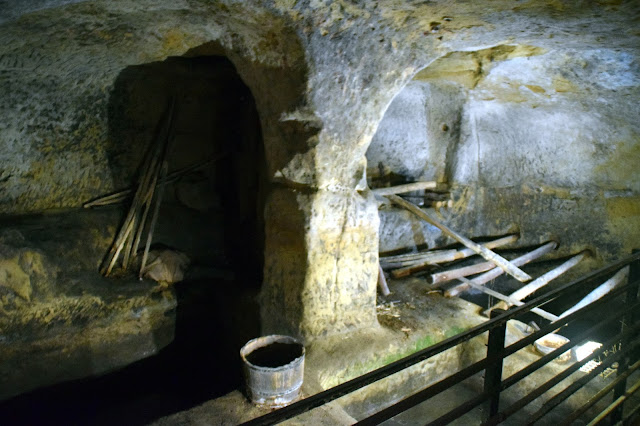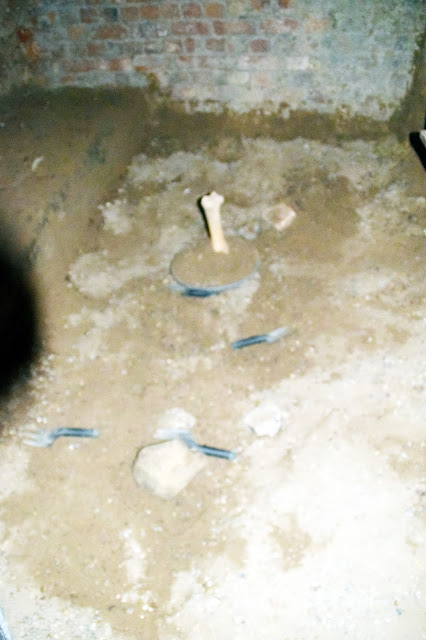City Of Caves at Nottingham is part of a complex of over 500 caves dating back to the Dark Ages, the last of which were in use until as late as the 1940`s.
The area was originally known as Tiggua Cobaucc, meaning ‘Place of Caves’,
and the first extant reference to Tiggua Cobaucc was in The Life Of
King Alfred, by Welsh monk and historian, Asser, the Bishop of
Sherborne, who visited Nottingham around 900 AD. These ancient caves
were likely used for housing as early as the 11th century, and
troglodytes were certainly recorded in the 17th century. Many were
inhabited until 1845, when the St. Mary’s Enclosure Act banned the
rental of cellars and caves as homes for the poor, though the practice
doubtless continued underground!
[ http://www.cityofcaves.com/]
Medieval Tannery
Experience the sights, sounds and smells of the only medieval
underground tannery in the country, including the spectacular Pillar
Cave dating back to 1250AD.
The tannery was in use from 1500 – 1640. Tanning is the process of
making leather from animal skins. In medieval times it was used for
making shoes, belts, gloves harnesses, armour and bottles – a viable and
profitable business.
Tanning was a very long process and the work was hard, dirty and very
unhealthy. The awful smells from the tanning process clung to the
workers clothes and hair. The stench was so strong that it even kept the
rats away!
Time to head to the Anderson Shelter. This is war-torn England at the height of Hitler’s power.
When the bombs fell, thousands of people sought refuge and retreated
to the safety of the shelters built in the caves beneath the city.
By February 1941 86 caves in Nottingham were available as public
shelters. The sandstone caves were also a useful source of sand for
sandbags and a number of holes were dug to supply the demand.
The Slums of Drury Hill
Imagine living in a windowless, airless, dark and damp cellar for
most of your life, with the noise and bustle of the slums of Narrow
Marsh surrounding you…Left standing are the original basement walls of
the last remaining buildings of Drury Hill, one of the main streets in
the notorious Narrow Marsh area of the city. In Medieval Nottingham this
area was a wealthy neighbourhood but by 19th century some of the worst
slums in Britain could be found here.
Housing was in short supply in Nottingham and the poorest families
often rented basements to live in. Entire families slept, ate and lived
in a single room. The overcrowding and poor sanitation made it a
breeding ground for diseases such as cholera, Tuberculosis and Smallpox.
The area which now makes up Nottingham city centre was once known as
Tiggua Cobaucc which means ‘Place of Caves’. The first known reference
to Tiggua Cobaucc appears in The Life of King Alfred by the famous Welsh
monk Asser, the Bishop of Sherborne, who visited this area around
900AD.
People in Nottingham have been living in caves like these since at
least the 17th century. These caves and others locally were inhabited
until 1845 when the St Mary’s Enclosure Act was passed which banned the
renting of cellars and caves as homes for the poor.
THANKS TIM FOR COMPANY in THIS UNIQUE SITE


































No comments:
Post a Comment